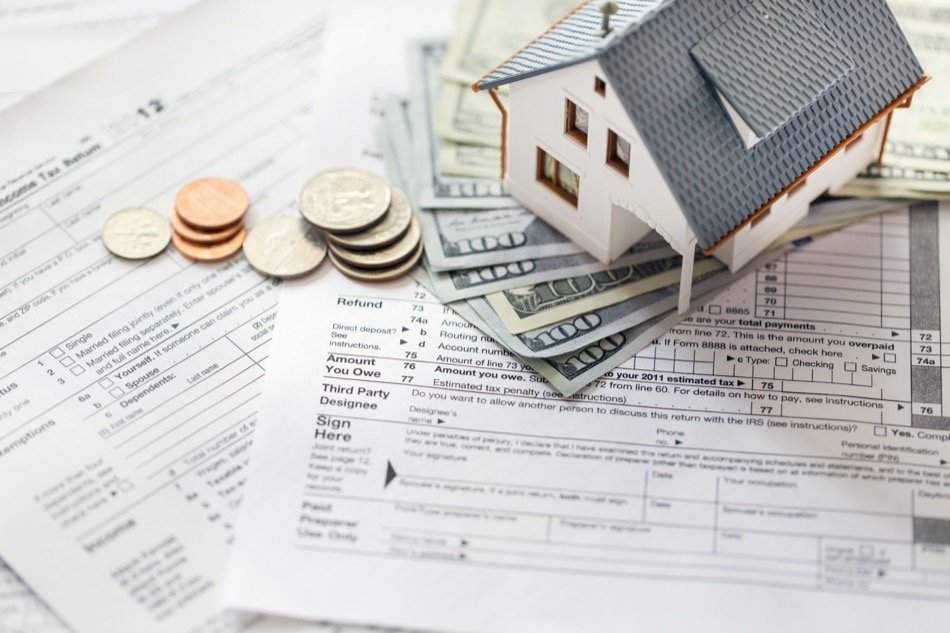Real Estate Investing: Navigating the 1031 Exchange Process
Posted by Gary Ashton on Wednesday, March 13th, 2024 at 2:35pm.

Designed as a tax-deferral mechanism for real estate investors, a 1031 exchange empowers you to sell a property, acquire another, and delay capital gains tax on a real estate transaction. This guide will succinctly walk you through the process, from defining "like-kind" properties to measuring the importance of strict IRS timelines. We’ll cover the role of intermediaries and the crucial steps to maintaining the exchange’s tax-deferred status—giving you a clear road map to maneuvering these exchanges with confidence.
Key Takeaways
-
The 1031 exchange allows investors to defer capital gains taxes on property sales by reinvesting in like-kind properties within specific time frames, with strict IRS guidelines requiring adherence to a 45-day identification and 180-day closing period.
-
A wide variety of real estate investments qualify for 1031 exchanges, including rental, commercial, and vacant land, offering investors flexibility in portfolio management and the opportunity for growth through exchanges with different property classes and markets.
-
Advanced 1031 exchange strategies such as reverse and build-to-suit exchanges offer investors additional flexibility, letting them secure replacement properties before selling their current ones or improving new properties as part of the exchange, subject to completion within IRS deadlines.
Understanding the 1031 Exchange Process
The 1031 exchange process serves as a platform for capital preservation and longevity enhancement of your investment. Primarily, it is a like-kind exchange that facilitates investors in deferring capital gains taxes on property sales, by reinvesting the proceeds into a similarly valued new property. This process includes the following steps:
-
Relinquishment of an existing investment property
-
Identification of a replacement property
-
Acquisition of the replacement property Throughout this process, a qualified intermediary safeguards the funds. By deferring capital gains tax and sidestepping depreciation recapture, investors can meaningfully bolster their reinvestment capability and financial resilience.
A successful 1031 exchange is not just about swapping one property for another; it’s a delicate dance with critical steps involving a qualified intermediary and an adherence to stringent timelines.
Key Components of a 1031 Exchange
Within the context of 1031 exchanges, the term "like-kind property" has a broad interpretation, covering a diverse range of real estate, as long as they are held for business or investment purposes. Quality or grade doesn’t constrict this definition, which means that investors have considerable latitude in selecting a replacement property. However, navigating this flexibility successfully requires a seasoned guide in the form of a qualified intermediary. This entity is pivotal, holding your exchange funds and ensuring that the transaction adheres to the Internal Revenue Service’s (IRS) requirements to maintain its tax-deferred status.
Another key component in the structure of a 1031 exchange is timing. The clock starts ticking upon the closure of your relinquished property, initiating a 45-day countdown to identify potential replacements. The whole exchange must then be wrapped up within 180 days, a deadline that is not just a suggestion but a mandate for keeping the taxman at bay. With such precise timing in play, investors must be as punctual as they are strategic to secure the tax benefits on offer.
Importance of Timing in a 1031 Exchange
The IRS strictly adheres to deadlines when it comes to a 1031 exchange. Investors have a 45-day window to pinpoint potential replacement properties and a total of 180 days from the original sale to close on the new asset. Straying beyond these limits isn’t just a minor misstep; it can disqualify the exchange altogether, triggering immediate capital gains liabilities. In short, to keep the exchange tax-deferred, both identification and acquisition must be completed within the stipulated timeframes, which includes the span needed to close on the replacement property.
The peril of missing these critical timelines cannot be overstated. The consequences are not merely inconvenient; they can be financially crippling. That’s why strict adherence to the 45-day identification period and the 180-day closing deadline is not just advisable—it’s imperative for a successful 1031 exchange.
Types of Investment Properties Eligible for 1031 Exchanges
In considering a 1031 exchange, the range of eligible investment properties is notably broad. It stretches beyond the confines of classic residential or commercial buildings to include the likes of rental properties, various commercial edifices, and even vacant land. The common thread binding these varied property types is their use for business or investment properties purposes, and they can be situated anywhere within the United States. Moreover, sophisticated investors can explore fractional interests in large-scale real estate through vehicles like Delaware Statutory Trusts (DSTs) and Tenant-in-Common (TIC) properties, expanding the horizon of 1031 exchange opportunities.
The versatility of 1031 exchanges makes them an attractive avenue for savvy real estate investors. Whether transitioning between different markets or scaling up investments, the range of properties that qualify for these exchanges can be a game-changer. We will explore the specifics of these property types to comprehend their role within the larger framework of 1031 exchanges.
Rental Property Exchanges
Rental properties are a mainstay in the investment landscape, and their exchangeability under section 1031 is a boon for investors looking to evolve their portfolios. Whether you’re selling a beach house and buying a condo or a single rental house for a cluster of units, the continuity of your investment is maintained. The flexibility to move into markets with higher growth potential or to consolidate assets can significantly enhance your investment’s performance. Even vacation homes can get in on the action, provided they meet the IRS’s criteria for rental and personal use.
Strategically executed rental property exchanges can be a powerful tool for real estate investors. They not only allow for geographic repositioning to areas with stronger rental demand but can also streamline investments into more manageable and lucrative portfolios.
Commercial Property Exchanges
Commerical properites also presents fertile ground for 1031 exchanges, with properties such as office buildings, retail spaces, and industrial facilities all eligible candidates, provided they are used in a trade or business setting. These exchanges can serve as a stepping stone for investors aiming to upgrade from older, less efficient buildings to state-of-the-art facilities, or as a means to broaden their investment horizons by diversifying their asset types. Furthermore, consolidating several smaller commercial properties into a single, grander asset can be a strategic move to simplify management and cut costs.
The intricacies of commercial property exchanges can be daunting, given their scale and the complexities involved, such as navigating multiple tenants and lease agreements. Yet, with the right guidance and strategy, these exchanges can be a lucrative venture for the astute investor.
Vacant Land Exchanges
Vacant land is often overlooked as a passive investment, but in the context of a 1031 exchange, it can be a springboard to greater returns. Investors can exchange idle land for properties that generate income or for parcels ripe for development, thus repositioning their portfolios for improved cash flow. This transition from non-income producing to income-producing properties can significantly impact an investor’s bottom line. And for those with a vision for the future, vacant land earmarked for business or investment development remains a viable option for exchange.
Tips For a Successful 1031 Exchange
Be Ready to Move
There are strict guidelines for investors. With only a mere 45-day period granted in which to identify a similar property, investors have no time to lose after selling the original property. Once the second investment property is selected, another 135 days are allowed in which to make the purchase. Some choose to consider multiple properties for purchase before selling the original property. This helps them move quickly though the process of inspecting and closing on like-kind property.
Use of Equity and Debt
Investors who want to defer all of their capital gain taxes would do well to utilize all the equity and debt from the sale toward buying a property of the same or greater value. Do not expect to buy a property of lesser value and defer all the capital gains taxes. Investors will want to transfer the equity and debt from the original property to the new property to reap the full benefits.
It may not be possible to find a like-kind property of the same or greater value. A partial exchange or “boot” may then be possible. The investor would then have to pay capital gains on any difference arising from not using all the proceeds of an East Nashville new home sale. More debt or proceeds may be added with this exchange.
Go through a Qualified Intermediary
A homeowner would be able to sell a primary residence, buy a new home and receive cash directly. This does not happen under a 1031 exchange. Investors are obligated to work with a Qualified Intermediary (QI) to help with the swap of properties. Serving as an independent 3rd party, they will hold the sales proceeds and buy the second property. All this will be done for the investor.
Invest Smarter With 1031 Exchanges
The most important things to know about 1031 exchanges include their capacity for significant tax advantages, the diversity of property types that qualify, and the complex regulations that must be carefully navigated. Furthermore, the exploration into sophisticated exchange tactics and the tax consequences underpinning these transactions underscores their effectiveness as a powerful mechanism for investment expansion. It is essential to recognize that 1031 exchanges are often one of the best strategies for buying second homes.

Gary Ashton
The Ashton Real Estate Group of RE/MAX Advantage
The #1 RE/MAX team in the World!
